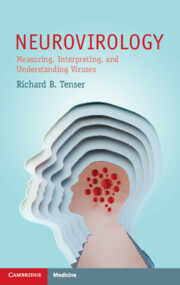Book contents
- Neurovirology
- Neurovirology
- Copyright page
- Dedication
- Contents
- Preface
- 1 Introduction to Virology
- 2 Measurement of Infectious Virus
- 3 Molecular Biology
- 4 The Immune System
- 5 Viral Pathogenesis
- 6 Viral Infections of the Nervous System
- 7 Neurovirology and Immunology
- 8 Experimental Neurovirology
- 9 The Future
- References
- Index
- References
1 - Introduction to Virology
Published online by Cambridge University Press: 13 July 2023
- Neurovirology
- Neurovirology
- Copyright page
- Dedication
- Contents
- Preface
- 1 Introduction to Virology
- 2 Measurement of Infectious Virus
- 3 Molecular Biology
- 4 The Immune System
- 5 Viral Pathogenesis
- 6 Viral Infections of the Nervous System
- 7 Neurovirology and Immunology
- 8 Experimental Neurovirology
- 9 The Future
- References
- Index
- References
Summary
Viruses grow (replicate) only inside living cells. Are viruses alive? Probably not, but the more important issue is their infectivity. Polymerase chain reaction (PCR) methods approach the issue of infectivity in that they measure the presence of viral nucleic acid (DNA or RNA – the viral genome). However, PCR evidence of viral nucleic acid does not necessarily indicate the presence of infectious virus.
Many methods of viral detection exist, including the detection of viral nucleic acid – PCR, Southern (DNA) and northern (RNA) blots; viral protein (antigen) – immunohistochemistry, ELISA (enzyme linked ; electron microscopic visualization of virus; direct measurement of infectious virus particles – the plaque assay.
Viruses may change their proteins (their antigens) and this may have important consequences for their infectivity and for their antibody control.
The issue of the “aliveness” of viruses may be considered along that of atypical agents, including endogenous retroviruses, viroids and prions. Endogenous retroviruses are components of normal cells, viroids consist of a bit of RNA, and prions are “infectious” but contain no DNA or RNA. All are very unusual in considering the concepts of living agents and infectious agents.While viruses may be pathogenic and cause disease, viruses also may be used to attack bacteria (bacteriophage).
Keywords
- Type
- Chapter
- Information
- NeurovirologyMeasuring, Interpreting, and Understanding Viruses, pp. 1 - 33Publisher: Cambridge University PressPrint publication year: 2023



